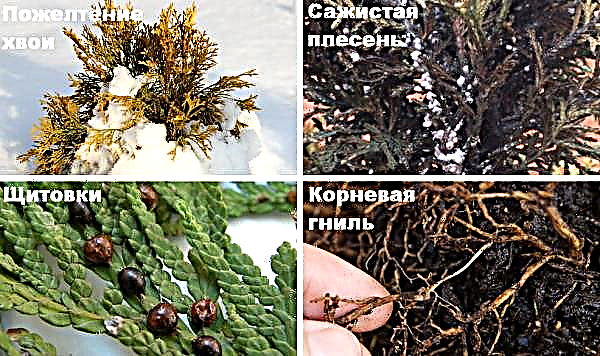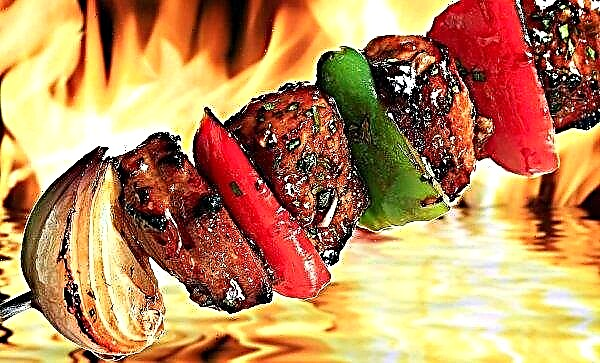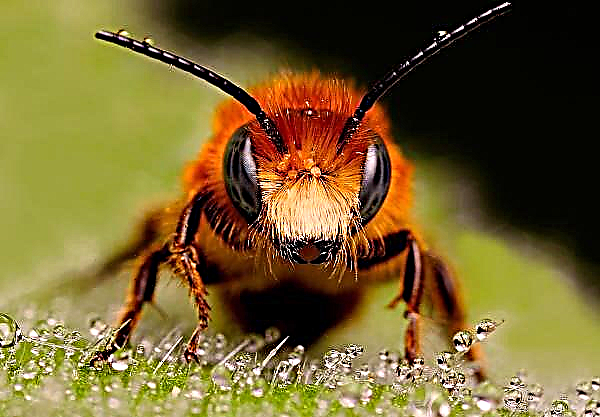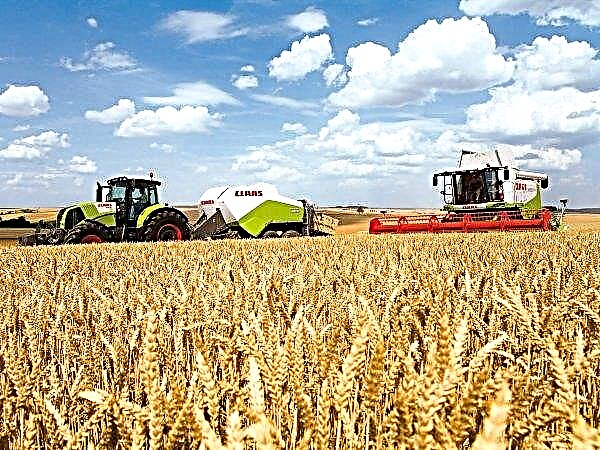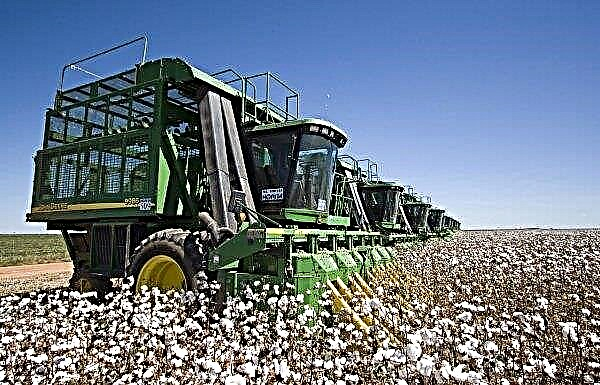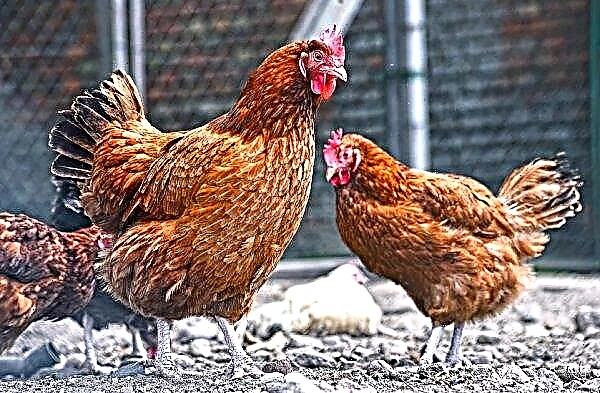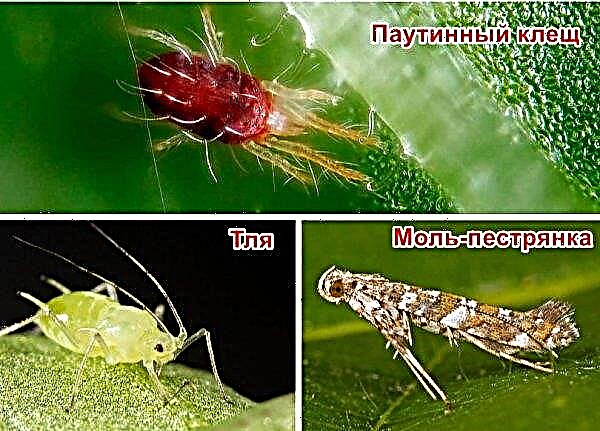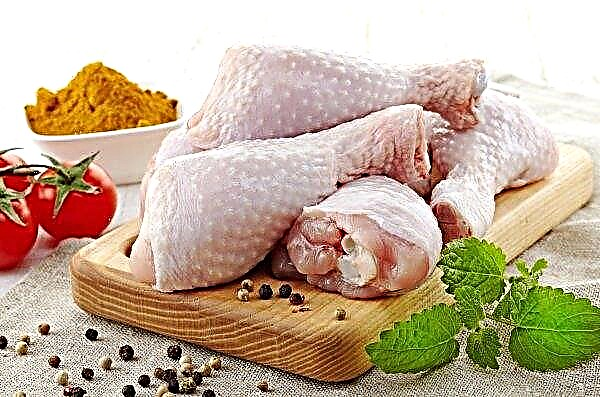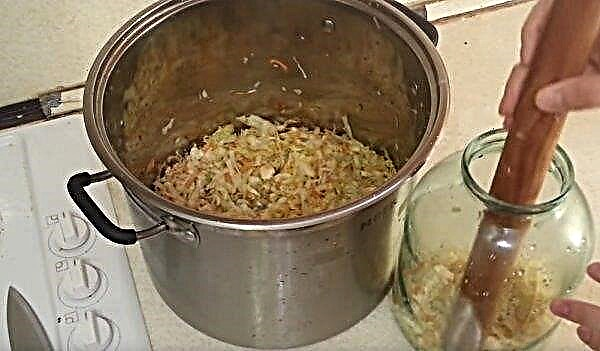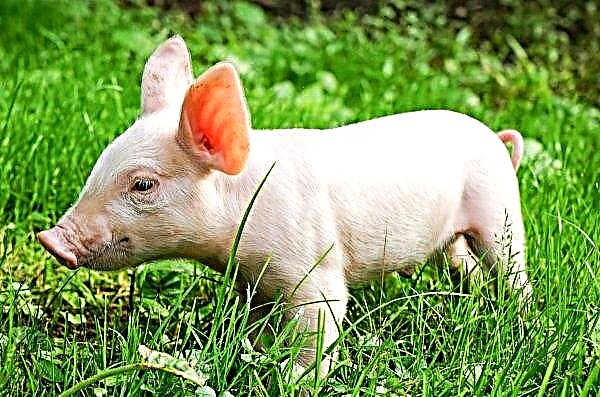A native of the Dutch nurseries, the Magical Sweet Summer panicle hydrangea variety captivates gardeners with its play of color. In spring, its shoots are crowned with conical inflorescences up to 25 cm long. At first they will be white, and then they will turn pink. You will find detailed information about the variety, the characteristics of its planting and cultivation in the material.
Grade description
The Magic Sweet Summer variety was obtained at Boot & amp; Co ”, which is located in the city of Boskop (Boskoop) in the Netherlands. The variety is officially registered, so its sale is carried out only by certified sellers through direct deliveries from the manufacturer.
 The variety is the owner of the silver medal of the Dutch gardening achievement exhibition - PLANTARIUM 2013, where the variety was given the best characteristics
The variety is the owner of the silver medal of the Dutch gardening achievement exhibition - PLANTARIUM 2013, where the variety was given the best characteristics
It is characterized by dense cone-shaped inflorescences up to 25 cm high. The small four-petal flowers located in them begin to bloom gradually, from the bottom up. They are updated all summer. Therefore, the bush is simultaneously decorated with panicles of three colors: light green - just appeared, white - at the time of opening, pink - when the inflorescence is fully ripe.
Important! Hydrangea leaves are toxic to dogs and cats. Keep parts of the plant out of your pets ’food.
Variety Description:
- the culture: panicled hydrangea (Hydrangea paniculata);
- series: Magical
- tradename: Sweet Summer (Sweet Summer or Sweet Summer);
- a type: deciduous, straight-stemmed shrub;
- tall 1.2-1.5 m, width 1.2-1.3 m;
- bush shape: rounded;
- shoots: strong, well-held upright;
- foliage: green, purple in the fall;
- leaf shape: large, ovoid;
- bloom: from July to October;
- pollination: bees;
- winter hardiness: -30 ° C;
- lighting: full sun, partial shade, shadow;
- the soil: organically rich, well moisturized, well-drained;
- acidity: moderately acidic (5.6–6.0 pH);
- watering: moderate;
- of greatest decorative interest: summer and autumn;
- can be grown in open ground and potted;
- note: the variety is resistant to drought, smog, urban atmosphere; can be used for hedging.
Landscape design application
Hydrangeas are used to create hedges, decorative screens for other plants.. They blend well with different cultures, but also use solos, which is good for gardens located in small spaces.
This is a great choice for "magic gardens", in which there are mysterious grottoes and flowering glades that suddenly appear in front of the traveler. In this case, they are combined with ground cover, creating spectacular colorful flower beds.
Important! Diameter of a planting pot under a hydrangea bush — 45–50 cm. Do not use smaller ones, because in them the earth will dry out faster and plants will begin to suffer from overheating.
Hydrangeas also make an elegant summer gardenif you combine these bushes with low trees with a spherical crown, roses, ferns or heathers, which are suitable as the lower tier of the garden composition.
The variety is also suitable for growing in pots.. In this case, you can not only decorate the gazebo or terrace, but also move them around the garden to where they will be most appropriate. Hydrangeas are excellent honey carriers. Therefore, with their help, gardeners draw attention to those parts of the garden where pollinators are needed at this moment.

How to plant
Growing Magic Sweet Summer begins with a proper planting: selecting a place with suitable lighting, soil, and acquiring a seedling in a nursery. Purchased in containers, young bushes should be planted in spring or autumn. It is important that there is no risk of frost on the soil at the time of planting and after it.
Seat selection
The best area for Sweet Summer would be where the plant is in the sun in the morning and in the shade in the evening. Although hydrangeas grow in areas with full sunlight throughout the day. When choosing a place to plant, be sure to consider the mature size of the bush, it should have enough space for growth.
Do not plant hydrangeas under the trees. The roots of the flower shrub will not stand the competition with the tree for nutrients. The bushes will turn out frail and painful in appearance. Also avoid landing in areas where there are no obstacles to the wind. The shoots of the plant are fragile and a strong wind can break them.

Soil preparation and seedling
Choose a place with well-drained soil. Check it out is very simple. Dig a landing hole. Pour water into it and wait until it is absorbed. Then draw water again. If after 2 hours there will still be water in the pit, then a layer of pebbles or broken bricks must be laid to the bottom to exclude contact of the root system with excess moisture.
As for acidity, it can be any. Hydrangeas are not too demanding on this parameter. But it should be remembered that the soil must be fertile. To do this, it is diluted with 1-2 buckets of compost, which are mixed with soil removed from the pit and used when planting. The seedling itself does not need to be specially prepared. But in order to make it easier to remove their container, water the plant several hours before transplanting to a permanent place.

Landing algorithm
They dig a landing hole a few days before landing. Its size should exceed the volume of the root ball by 2-3 times. It should be borne in mind that a layer of pebbles will be laid on the bottom. And the remaining space should be enough to plant a bush and provide it with nutritious soil.
Important! When planting in a pot, be sure to use a sterile store mixture for planting, and not garden soil, in which there are many pests and plant pathogens. Make sure that the tank has drainage holes.
The algorithm for further planting operations will be as follows:
- If there are several plants, then the distance between the holes is at least 70 cm. Between the building, the alley or other obstacle and the bush should be at least 50 cm. An adult plant needs to be well blown by the wind and shined by the sun from all sides.
- The earth extracted from the landing pit is ennobled. If it is dense and clay - add sand. For nutrition - add humus, compost or other organic fertilizers. Also, under each bush you can make 200-300 g of ash. It is a source of potassium, which is needed for the development of the root system and shoots.
- At the bottom, if necessary, lay drainage. The layer thickness is 15–20 cm.
- Prepared soil is poured on top.
- The seedling is removed from the container and set in the center.
- If the roots seem to be tangled, carefully weaken them along the edges, but do not shake the soil in which they grew.
- Then they begin to fall asleep with earth. You need to make sure that the planted bush is at the same distance from the soil surface that it grew in the container.
- Water the plant 1-2 buckets of water.
- A layer of mulch is placed on top. It solves a number of problems: it protects the soil moisture from evaporation, prevents the roots from overheating in the heat, interferes with the growth of weeds and ensures loosening of the soil.

Care
Further shrub care includes:
- regular watering;
- fertilizing;
- pruning
- preparing shrubs for wintering;
- pest prevention and control.
Video: Garden hydrangeas pruning and wintering care
Watering
Hydrangeas love moist soil, but not water, which constantly “stands” at the roots. From this they begin to hurt. Therefore, water the bushes in the open ground immediately, as soon as you see that the soil is visually dry.
In containers, plants are watered once every 2 days.. This plant is an active consumer of water. Therefore, moisture is quickly used in the pot, and the bush cannot get it from other sources. Add a layer of mulch to maintain moisture.

Top dressing
All plants need nutrients for growth. Therefore, gardeners contribute them in the form of organic or inorganic compounds. Hydrangeas need to be provided with nitrogen, phosphorus and potassium. The first element is needed for the active development of shoots and foliage, the last - to create a root system and organize intercellular exchange. Phosphorus is also involved in metabolic processes and is needed for photosynthesis.
Did you know? The name "hydrangea" comes from the Greek "hydro" — water and angos — jar or vessel. This explains the plant's need for plenty of water for prosperity.
Overfeeding the bushes is not worth it. So, excess nitrogen causes intense foliage growth. But peduncles in this case are formed much less or they will not be at all. In the people, this condition is called "the plant is fattening." Therefore, first inspect the bush. If it is well developed, the annual growth is at least 10 cm, then he does not need top dressing or add only half of the recommended dose.
If the plant needs to be fed, then gardeners use the following scheme:
- in the early spring, ammonium nitrate (150 g) is added to successfully start a new vegetative cycle;
- when inflorescences appear, they are fertilized with potash fertilizers and superphosphate (50 g each) to ensure lush flowering;
- in autumn, the bush is watered with slurry or 5–10 kg of compost is added.
 Each top dressing is completed with plentiful watering. This allows for better and faster absorption of the introduced substances.
Each top dressing is completed with plentiful watering. This allows for better and faster absorption of the introduced substances.
Pruning
Most varieties of hydrangea pruning is not needed. It is enough to maintain them in order, removing faded flowers and dry stems. This improves the structure of the bush and maintains it in a healthy state.
Please note that the size of the inflorescences is associated with pruning. Flowering occurs at the ends of young branches. Old ones need to be removed periodically to stimulate the growth of new ones. If the crop is cut too intensely, then there will be more shoots, but their inflorescences will be smaller. Less aggressive pruning will allow you to get large inflorescences.
Important! Be careful during pruning so as not to remove young branches with flower buds.
Anti-aging pruning is performed every 3 years. They do this at the end of winter, before the sap flow begins. Of course, you can cut branches later. But this period was chosen due to the fact that at low temperatures most of the phytopathogens that can affect the bush are inactive.
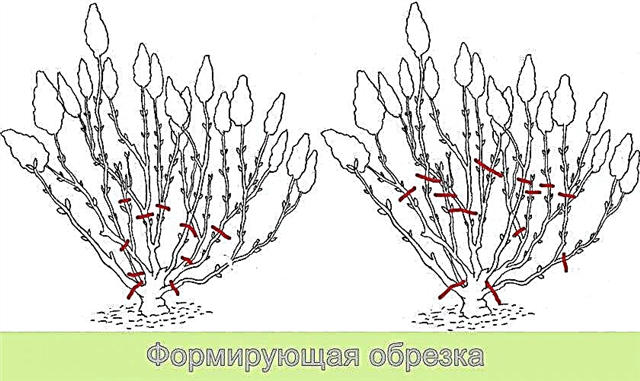
How can winter
The difficulties of the winter period for flowering shrubs are peculiarities of interaction with weather conditions. First, you need to consider the winter hardiness parameter. Grade Magical Sweet Summer is intended for areas in which the winter temperature does not fall below -30 ° C. Those. it is winter-hardy enough, but this may not be enough.
If frost gives way to a thaw, and then again the temperature drops sharply, then the kidneys can be torn apart by solidifying crystals of water. To prevent this, the bushes are recommended to be protected from contact with rain water and icicles. In a similar way, moisture solidified in the soil pushes roots to the surface and can damage them.
To protect plants, gardeners take the following measures:
- If a hole was made around the bush, which was used in the summer to organize watering, then in the fall it is leveled. When the temperature drops below 0 ° C, the root zone is covered with mulch. This layer will serve as an insulator from frost and sudden changes in soil temperature.
- Around the bush form a covering structure. It can be a skeleton on which agnofibre is stretched. Install it also after the air temperature becomes stably negative. Or apply a grid installation around hydrangea, which is filled with foliage or straw.
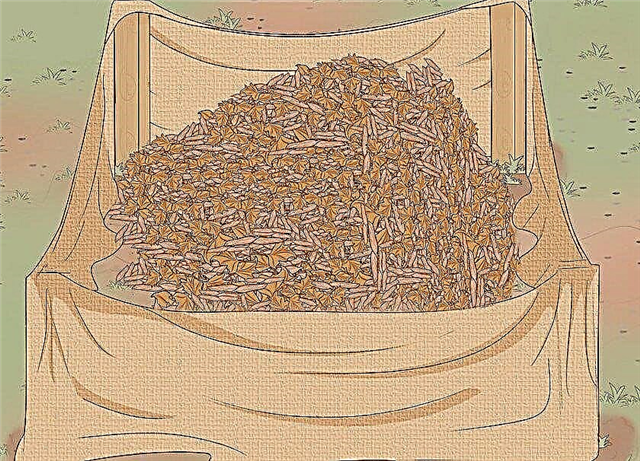
Breeding methods
All flowering plants can propagate by seed. This is their natural mode of distribution. But in hydrangeas it is complicated by an unimaginably small number of seeds.
Therefore, gardeners prefer to do this with more reliable methods:
- cuttings;
- layering;
- basal shoots.
If you do not have hydrangea, then of course, the "first" plant is bought in a nursery. But later, in order to form a hedge, it is not at all necessary to overpay, if this can be done independently.
Did you know? In Victorian England, it was believed that hydrangeas symbolize boasting or vanity, because they produce so many flowers, but give few seeds.
Cuttings
Cutting - the most common way. Proceed to it at the end of June. You need to choose a powerful branch of this year. Her bark will be fresher and greener than old shoots.
Step-by-step instruction for cutting:
- The branch must be divided into several parts. In each of them should remain at least a couple of internodes and leaves on them. The typical size of the shank is 13-15 cm.
- The lower internodes exempt from the leaves. But at the same time, at least 2 sheets should remain in the upper part. If they are too large, they are cut in half.
- The lower part of the shank is dipped in growth hormone or powder to stimulate root growth. Use Cornevin, heteroauxin, or Zircon.
- The pot is filled with a starter mix for flowering plants. It can also be made independently using peat and sand. The mixture in the pot is moistened.
- Make a hole with a pencil and set the stalk. Then the soil is compacted around it.
- Cover the plants with polyethylene, but so that the leaves do not touch the film. To do this, substitute the usual chopsticks on the sides and lower the film on them.
- Put the pot in a place where there will be enough light and the air temperature will remain within +17 ... + 21 ° С.
- Moisten the soil every few days and control the condensate. If it is, ventilate the plant.
- After a couple of weeks, the seedling will take root. This can be easily verified by carefully pulling it to the top. Rooted will be held in the ground by the formed roots.
Planting seedlings on a bed is best in spring. And this means that they should spend the winter on an unheated, but glazed balcony or in another room where access to sunlight will be organized. The temperature in it should be kept at a level not lower than -5 ° C.
Did you know? Although hydrangeas come from Asia, in 1910 one particular variety was discovered in America that was completely unrelated to Asia. This plant is today known as the Annabelle variety.
Layering
A lay is a branch that has been "diverted" from the main bush to the side, pressed to the ground, filled the ground with the ground, and secured regular watering. In a couple of weeks, roots will appear from the internodes of this branch. Such a bush will be more powerful than that obtained from cuttings, since it constantly receives food from the parent plant.
Hydrangea is propagated in this way from June to August. By autumn, a rooted branch can give several young shoots. As their growth increases, they carry out hilling. And in October, a new plant is dug up, separated from the mother and planted in a permanent place. They can also be dug in the winter, and planted in a permanent place in the spring.
Dividing the bush
If your bush is too large, then it can be divided. For this, the plant is dug up. Inspect the roots and divide into parts, which should result in approximately the same number of divisions. Then the parts are planted at a distance of 70 cm from each other.
Planting can be carried out in the same area where the bush grew before. But often gardeners pick up new places for them, since on the old site during the growth not only the soil was depleted, but also filled with various phytopathogens. The division of the bushes is planned for early spring and is carried out after the threat of spring frost has passed.
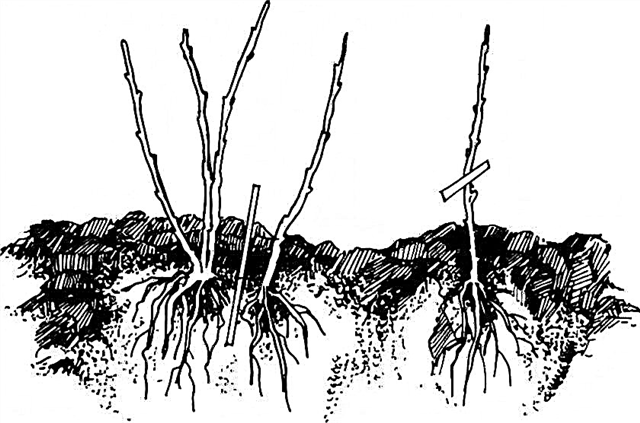
Diseases and Pests
Hydrangeas are generally not susceptible to serious diseases or problems with insects.. But protecting yourself from them is 100% impossible. Therefore, it is necessary to pay attention to the presence in the garden of pathogens of leaf spot, bacterial wilting, mold, and to apply preventive measures in time. It is also important to control the appearance of pests and destroy them.
The main problems of hydrangeas:
- Under bright sunshine may occur yellowing leaves. This is a sunburn. Remove the damaged leaves, and rearrange the plant in a less lighted area or arrange for him shelter from the sun if the bush grows in the garden.

- Chlorosis occurs due to lack of iron in the soil. This is a pathology, as a result of which the leaf plate turns yellow, and new leaves form smaller than usual. Feed this bush with Ferovit or Antichlorosis.

- With plenty of water, various rot develop. So, a white cotton coating is white rot. It appears on the leaves of hydrangea, then they become brown and fall off. And the plant itself can die if excess moisture is not eliminated. To combat the disease using "Fitosporin" or "Fundazole".
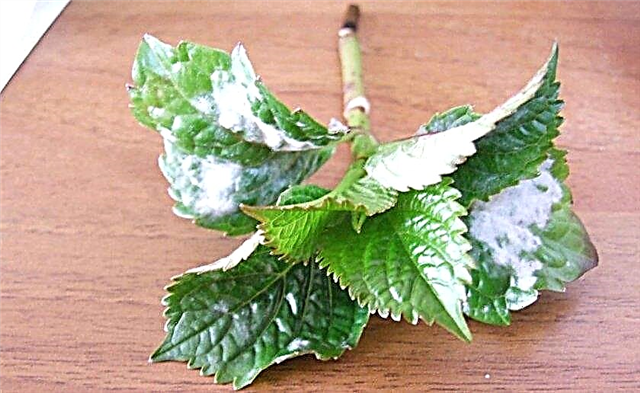
- Gray rot or botritis - These are weeping gray spots on the leaves. Later they become reddish brown. The development of the disease contributes to moisture and cool weather. It is necessary to remove the damaged parts of the plant, normalize the moisture and treat the bushes with “Thiofanate-methyl”, “Skor” or “Fundazol”. The treatment is repeated 3 times with an interval of 3 weeks.

- Septoria - These are dark red (brown) spots 2-6 mm in diameter. For the treatment of the plant, apply spraying with Fitosporin.

- Powdery mildew - This is a white and gray coating, similar to flour. Gradually, the spots become larger, the sheet turns brown and fades. For processing, use Alirin, Skor, or Phytosporin.
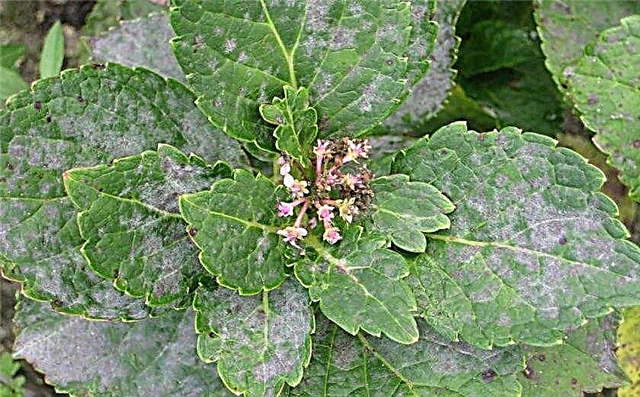
- Cercosporosis or leaf spotting manifests itself in the form of round purple or brown spots. When there are more of them, the leaves begin to turn yellow and fall off. It is treated by spraying with copper-based fungicides. For example, Bordeaux liquid (1%).
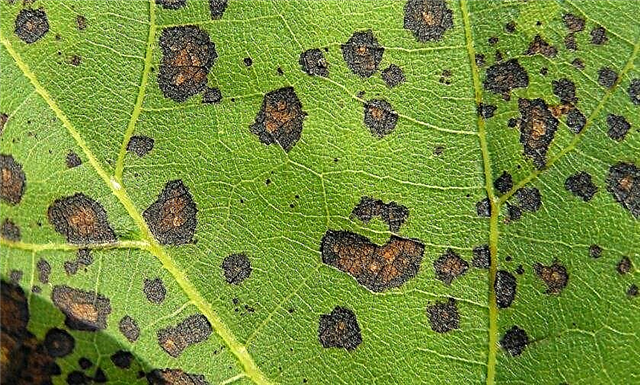
- Rust It is shown by spots of characteristic rusty color. Affected flowers lose their pink color and turn pale. For treatment, the bushes are treated with copper chloroxide based on 40 g of the product per 10 l of water.
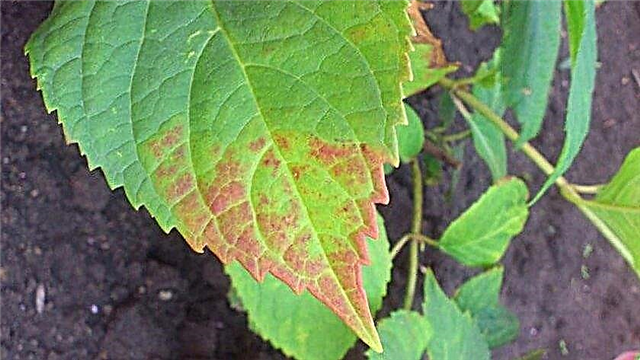
For prevention, they plan to treat the bushes in early spring, and then as necessary.. Any copper-based product is suitable for use. In the fall, spraying is repeated.
Did you know? One species, known as large-leaved hydrangea (Hydrangea macrophylla), is characterized by a change in the color of flowers depending on the acidity of the soil. The sour it is, the bluer the flowers.
Insects also cause damage to plants. They suck plant juice, damage leaves. And through the resulting damage, fungi, bacteria and viruses can enter the plants. To prevent the appearance of insects, the bush should be well lit by the sun, and air should circulate well inside it, blowing each branch.
The main pests:
- Aphid - These are small insects of a dark color that colonize on young leaves or cuttings. Remove them by spraying the bushes with soapy water. A small amount of insects can be washed off with a strong stream of water.

- Spider mites - one of the smallest insects. They settle on the underside of the leaves. Therefore, it is difficult to notice them. The traces of their activity will be small numerous dots on the leaves, as well as the finest cobwebs. To combat them, use the treatment of hydrangeas "Thiophos", "Fitoferm", "Akarin". And do not forget to repeat after 5 days, when a new generation of pests hatch from the laid eggs.
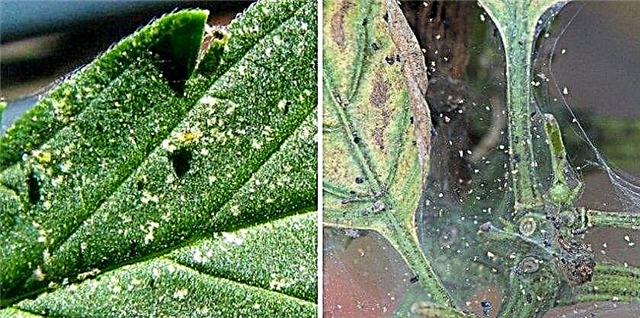
- Slug appear in thickened gardens. They eat leaves. To combat them, gardeners sprinkle beaten shell rock around the bushes. It is too stiff for the mollusk's delicate body. Therefore, such a barrier is impenetrable for them. If you intend to destroy the pests, use the “Molluscocide”.
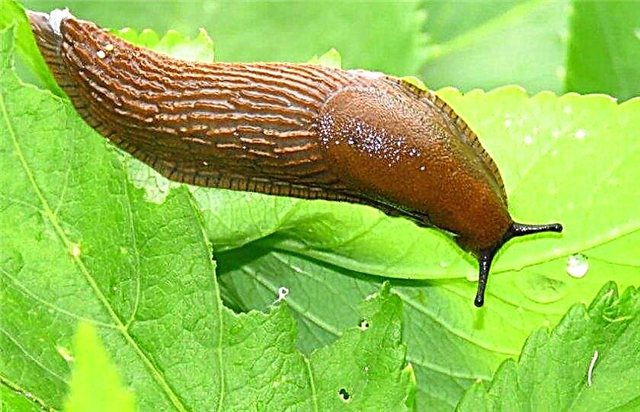
Hydrangea bushes are one of the most attractive flowering shrubs. They grow well on most soil types. Observing the simple rules for caring for plants, you will provide your garden with flowering bushes from early summer to late autumn.
Network user reviews
Huge inflorescences similar to cotton candy ... Use experience: a year or more I have more than a dozen hydrangeas growing. Magical Sweet Summer is one of the most beloved ... It immediately stands out among other plants, including other hydrangeas. This variety has huge dense inflorescences on massive shoots. The bush itself reaches a height of 1.5 m. My hydrangea is now 2 years old and its size is about 1 m high. Flowering begins in July and continues until the end of September. All stages of flowering are decorative - at first the inflorescences are pure white with a slight greenish tint, then they become more lemon and closer to fall they begin to turn yellow and acquire a pinkish tint. And even the faded inflorescences of a bronze hue look great in the autumn garden and in dry bouquets. At the very beginning of flowering, hydrangea looked like this. It was immediately clear that the inflorescence promises to become quite large ... Finally, the inflorescences reach their maximum size, but they are still white. But at the same time, they are voluminous and airy that look like cotton candy) This is the first half of August. And the end of summer - hydrangea begins to turn a little pink, the color becomes muted pink, such sunset shades ... Like most panicled hydrangeas, this variety is characterized by unpretentiousness and frost resistance (up to -29С). I have a great winter without shelter, under the snow. All that she needs is acidic soil (I have no problems with this on the site) and regular watering. I do not even loosen the soil around so as not to damage the superficial root system. It is resistant to diseases and pests. It can be successfully propagated by cuttings. A chic unpretentious shrub. Recommend.














